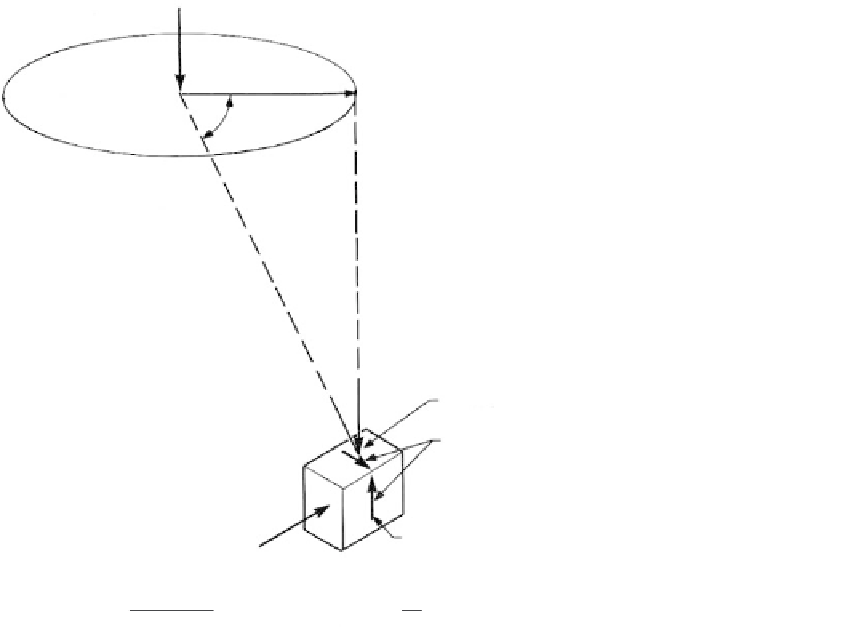Environmental Engineering Reference
In-Depth Information
Equations were presented by Boussinesq in 1885 expressing stress components caused
by a perpendicular point surface load at points within an elastic, isotopic, homogeneous
mass extending infinitely in all directions below a horizontal surface, as shown in
Figure
3.67.
The stresses are directly proportional to the applied load and inversely proportional
to the depth squared (a marked decrease with depth).
Distributions of stresses beneath a uniformly loaded circular area are given in
Figure
3.68
and have been determined for other shapes, including square and rectangular areas,
and uniform and triangular loadings (Lambe and Whitman, 1969). Distributions vary
from the Boussinesq with thinly layered soil formations as given by the Westergaard dis-
tribution (Taylor, 1948). Other stress distributions include layered soil formations (strong
over weak layer [Burmister 1962b], rigid base under weak layer [Burmister 1956], and
jointed rock masses [Gaziev and Erlikhman, 1971]).
Although geologic materials are essentially nonelastic, the theory is considered applica-
ble for relatively low stress levels, although the magnitude and distribution of stresses are
significantly affected by soil layering and fracture patterns in rock masses.
3.5.2 Deformation Relationships
Deformation Moduli
General
Deformation moduli are expressed in a number of ways that relate to either the form of
deformation or the stress-strain relationships obtained from a particular test method, as
summarized in
Table 3.26.
Q
r
θ
R
Z
σ
z
Point N
τ
rz
σ
v
σ
θ
FIGURE 3.67
Stresses in an elastic medium caused by
a surface, vertical point load.
Q
z
2
3/2
3/2
Q
z
2
π
[1+(
r
/
z
)
2
]
5/2
π
[1+(
r
/
z
)
2
]
5/2
σ
z
=
; N
B
=
;
σ
z
=
N
B


